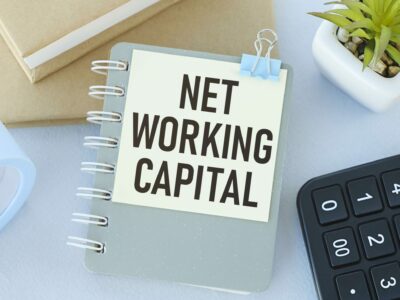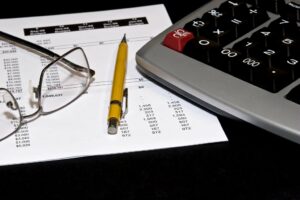
If you need help understanding your balance sheet or need help putting together a balance sheet, consider hiring a bookkeeper. Owners’ equity, also known as shareholders’ equity, typically refers to anything that belongs to the owners of a business after any liabilities are accounted for. External auditors, on the other hand, might use a balance sheet to ensure a company is complying with any reporting laws it’s subject to. Typically, a balance sheet will be prepared and distributed on a quarterly or monthly basis, depending on the frequency of reporting as determined by law or company policy. The image below is an example of a comparative balance sheet of Apple, Inc. This balance sheet compares the financial position of the company as of September 2020 to the financial position of the company from the year prior.
Accounting Crash Courses
Dummies has always stood for taking on complex concepts and making them easy to understand. Dummies helps everyone be more knowledgeable and confident in applying what they know. Accounts payable tells you exactly which suppliers you owe money to, and how much. For Where’s the Beef, let’s say you invested $2,500 to launch the business last year, and another $2,500 this year.
Create a Free Account and Ask Any Financial Question
The $6.33 billion in inventory listed assumes it will all sell for full price, and the $29.5 billion in accounts receivable assumes 100% of Apple’s customers will pay their bills. And “other assets” is the vaguest of all, typically including the value of things such as patents, goodwill, and other difficult-to-value items. With that in mind, we can see that Apple has a total of about $352.6 billion in assets on its balance sheet. It shows in one place how much the business owns (assets) and owes (liabilities). The report is used by business owners, investors, creditors and shareholders. Current liabilities refer to debts or financial obligations that must be settled within a year.

Long-Term Liabilities
- A liability is any money that a company owes to outside parties, from bills it has to pay to suppliers to interest on bonds issued to creditors to rent, utilities and salaries.
- The balance sheet is one of the three main financial statements, along with the income statement and cash flow statement.
- Also known as a company’s book value, shareholders’ equity can be thought of as the theoretical amount investors would have if a company closed its doors, sold off its assets, and paid its debts.
- However, it is common for a balance sheet to take a few days or weeks to prepare after the reporting period has ended.
- Though the balance sheet does not include an exclusive note for receivables, the note regarding financial instruments gives a breakdown of receivables by age.
- Beyond the editorial, an annual report summarizes financial data and includes a company’s income statement, balance sheet, and cash flow statement.
It is important to note that some ratios will need information from more than one financial statement, such as from the balance sheet and the income statement. Because the balance sheet reflects every transaction since your company started, it reveals your business’s overall financial health. At a glance, you’ll know exactly how much money you’ve put in, or how much debt you’ve accumulated. Or you might compare current assets to current liabilities to make sure you’re able to meet upcoming payments.
Analyzing Assets
When creating a balance sheet, start with two sections to make sure everything is matching up correctly. On the other side, you’ll put the company’s balance sheet explained for dummies liabilities and shareholder equity. A balance sheet is an important financial statement that summarizes a business’s financial situation.
Balance Sheets May Be Susceptible to Errors and Fraud

When a company makes a profit, the amount of profit is added to shareholders’ equity. When a company loses money, the loss is subtracted from shareholders’ equity. As a small business, it’s crucial to maintain a fixed asset register. This register serves as a comprehensive https://www.bookstime.com/ record, detailing all the information about each asset owned by your business. Not only does it help in tracking the value and condition of your assets over time, but it also plays a vital role in financial management, ensuring accurate depreciation calculations.
- For larger companies, they may even have the report on their website.
- For example, a manufacturing firm will carry a large number of raw materials, while a retail firm carries none.
- Various techniques, such as the first in, first out (FIFO) and last in, first out (LIFO) methods, are used for calculating stock levels.
- When your current assets are greater than your liabilities, your business is likely in a good financial position and is able to cover your short-term financial obligations.
- As retained earnings increase, so does the shareholders’ equity, indicating a higher net worth for the company.
- Inventory includes amounts for raw materials, work-in-progress goods, and finished goods.
Such asset classes include cash and cash equivalents, accounts receivable, and inventory. It is important to note that a balance sheet is just a snapshot of the company’s financial position at a single point in time. If you are a shareholder of a company or a potential investor, it is important to understand how the balance sheet is structured, how to read one, and the basics of how to analyze it.
- Balance sheets are one of the most critical financial statements, offering a quick snapshot of the financial health of a company.
- A business can prepare the balance sheet in several ways, but accounting software is the easiest.
- Thankfully, you can plug balance sheet information into various ratios for financial ratio analysis.
- You have to read the whole thing (sigh) and make comparisons among the items.
Different accounting systems and ways of dealing with depreciation and inventories will also change the figures posted to a balance sheet. Because of this, managers have some ability to game the numbers to look more favorable. Pay attention to the balance sheet’s footnotes in order to determine which systems are being used in their accounting and to look out for red flags. Some companies issue preferred stock, which will be listed separately from common stock under this section. Preferred stock is assigned an arbitrary par value (as is common stock, in some cases) that has no bearing on the market value of the shares. The common stock and preferred stock accounts are calculated by multiplying the par value by the number of shares issued.
